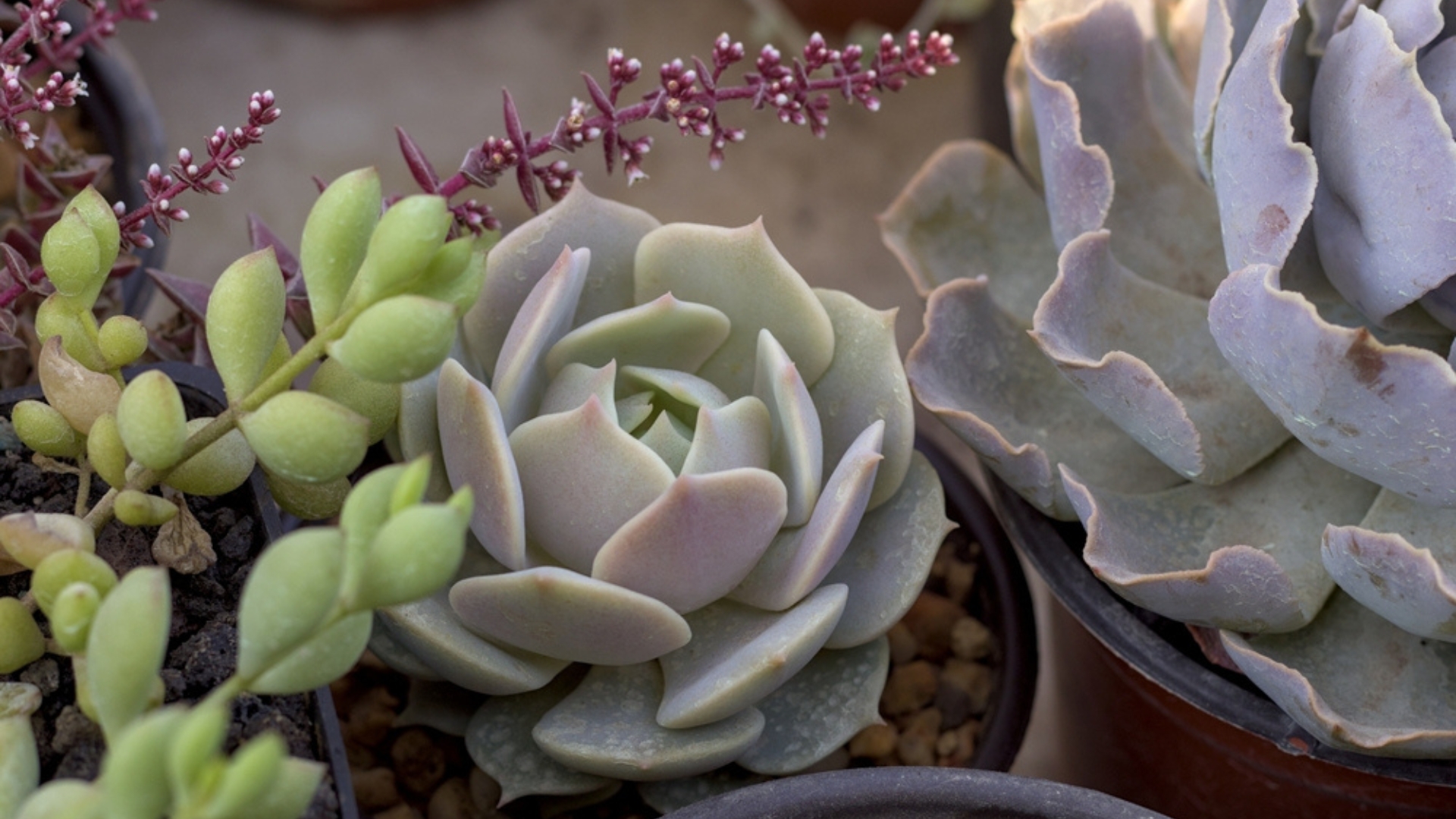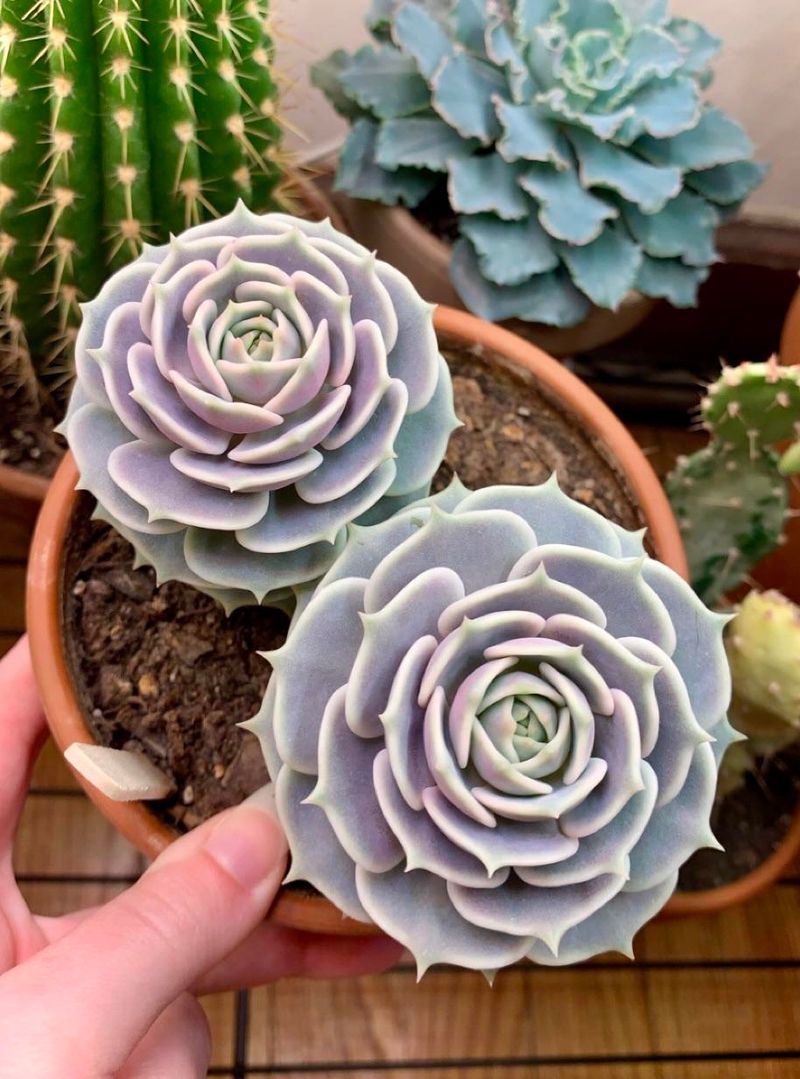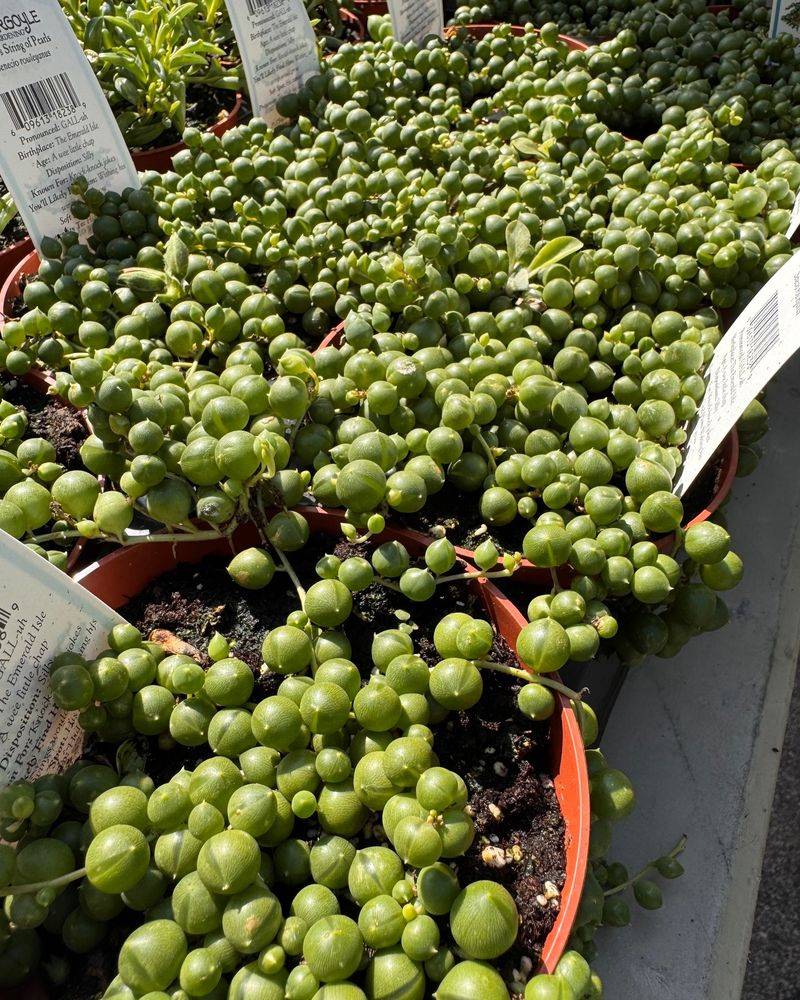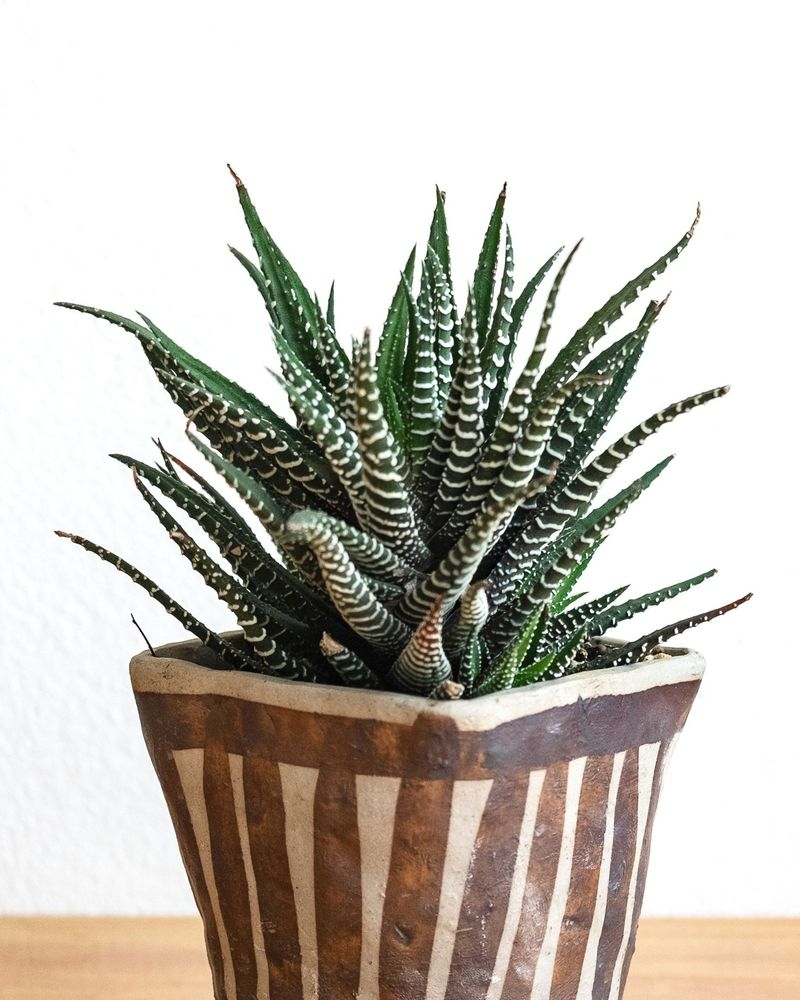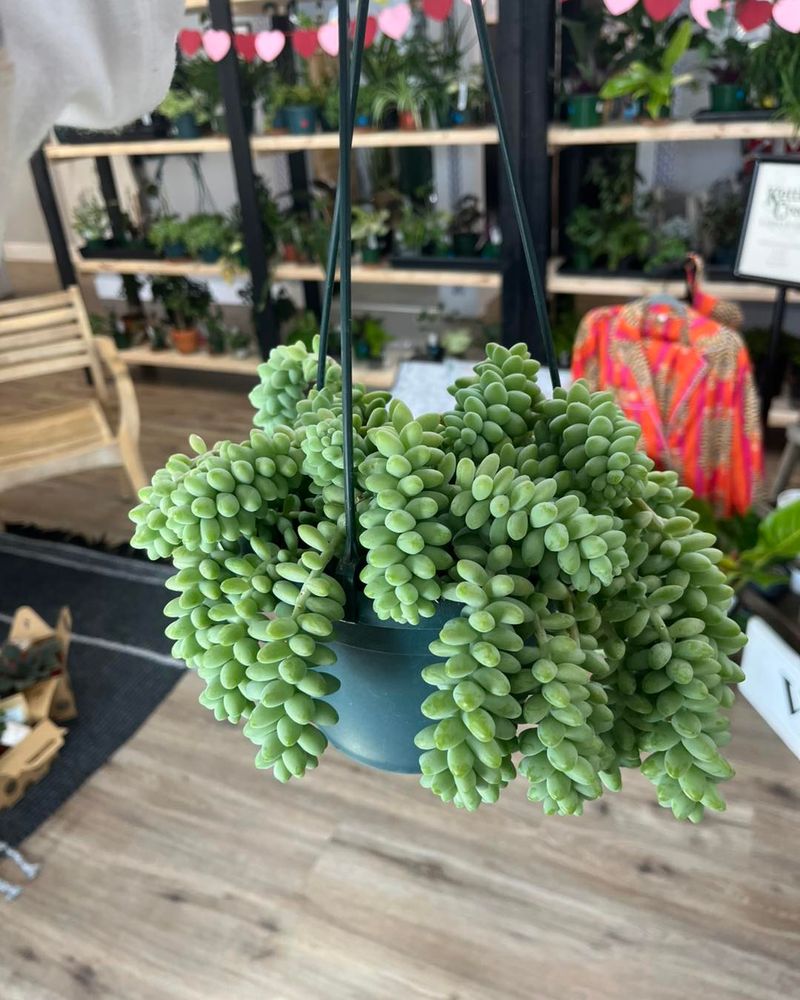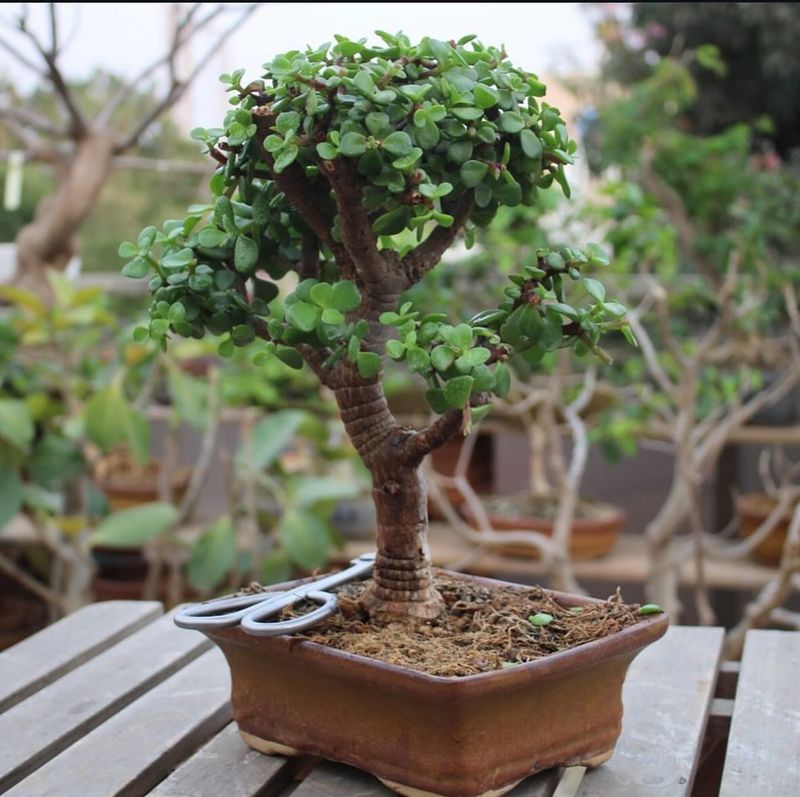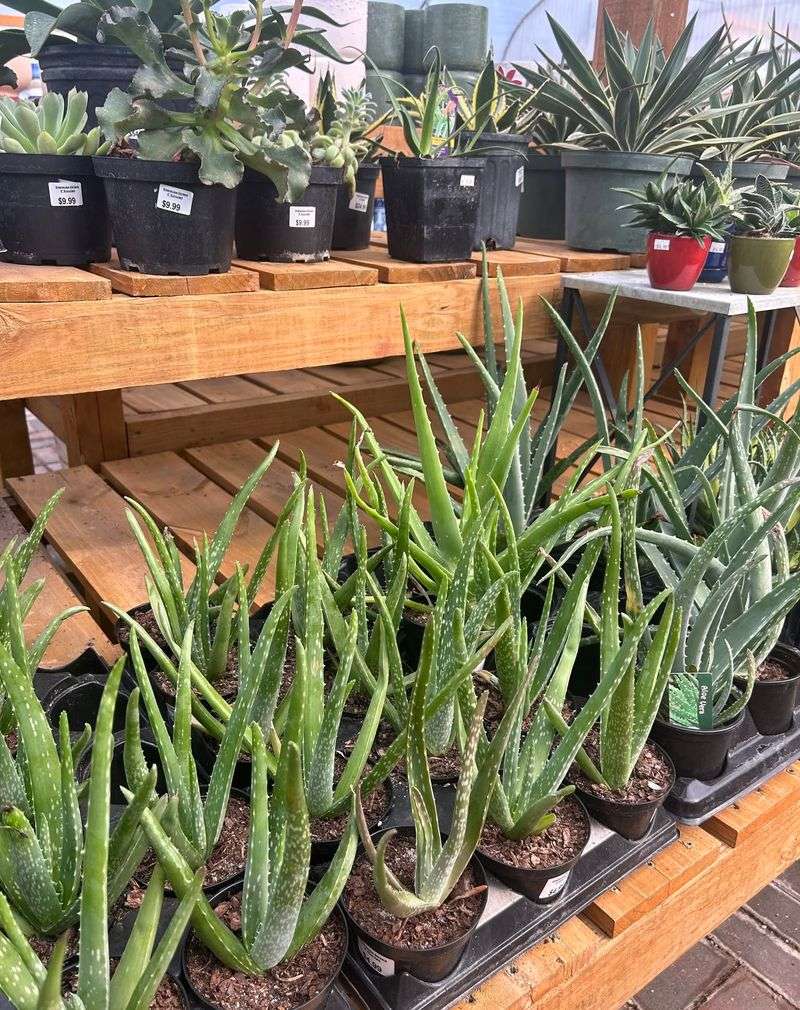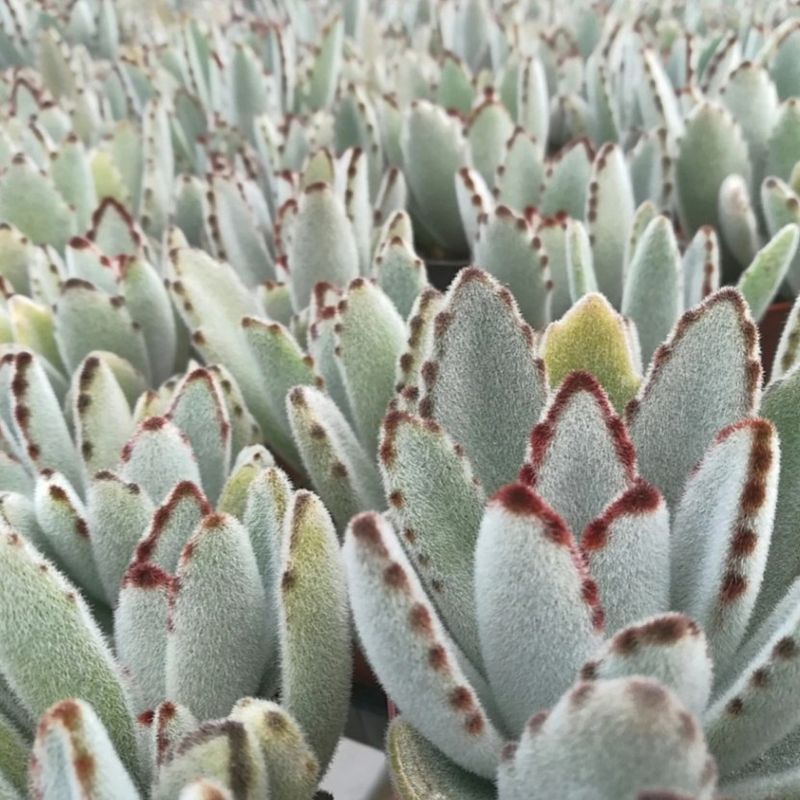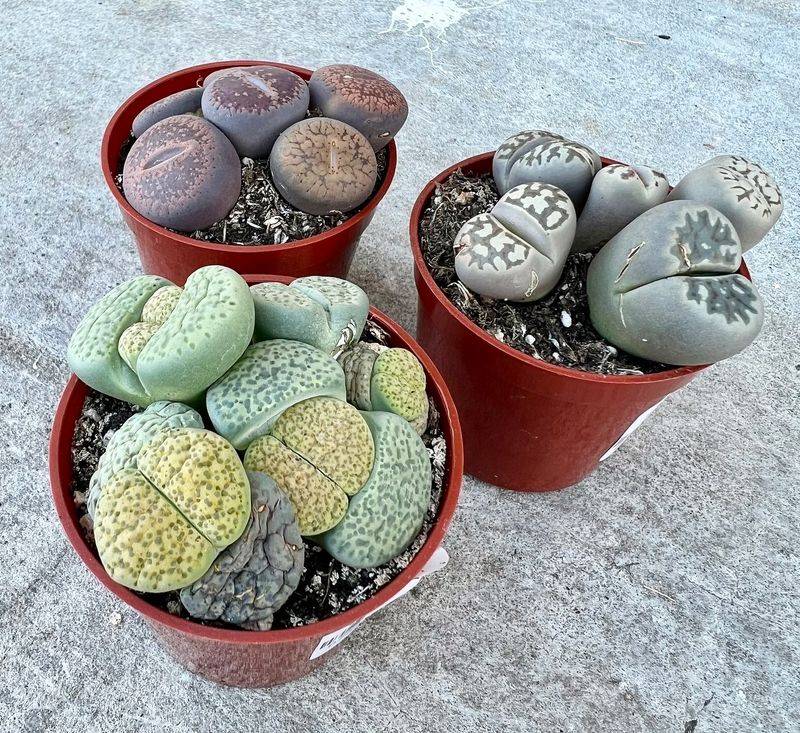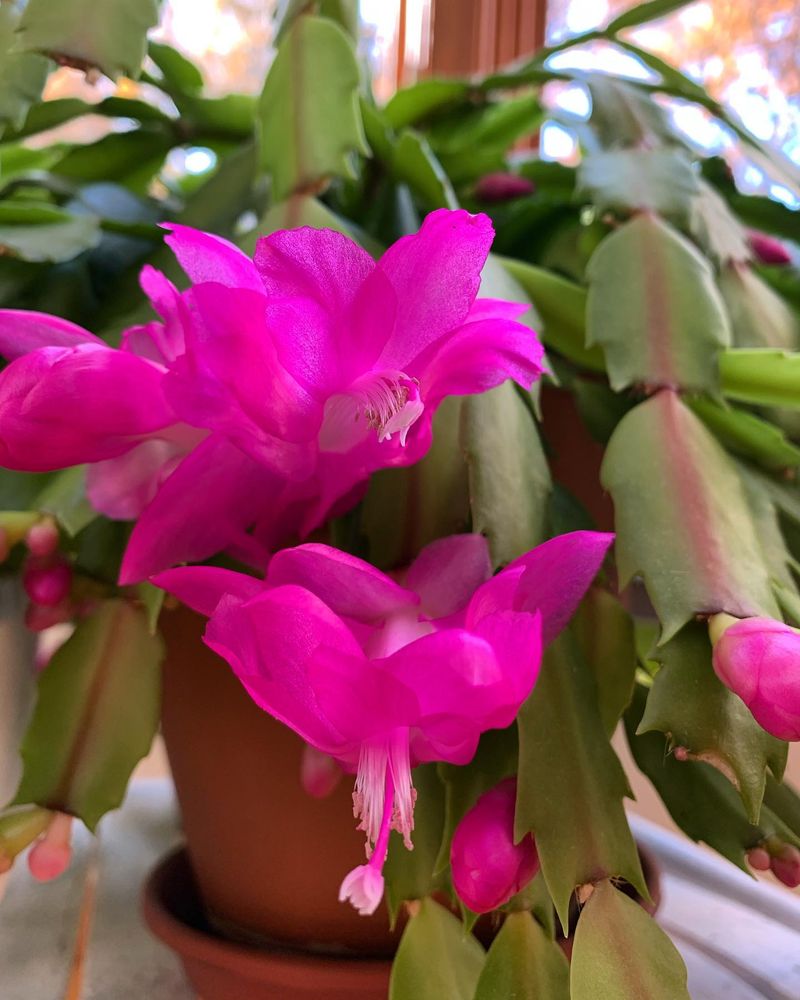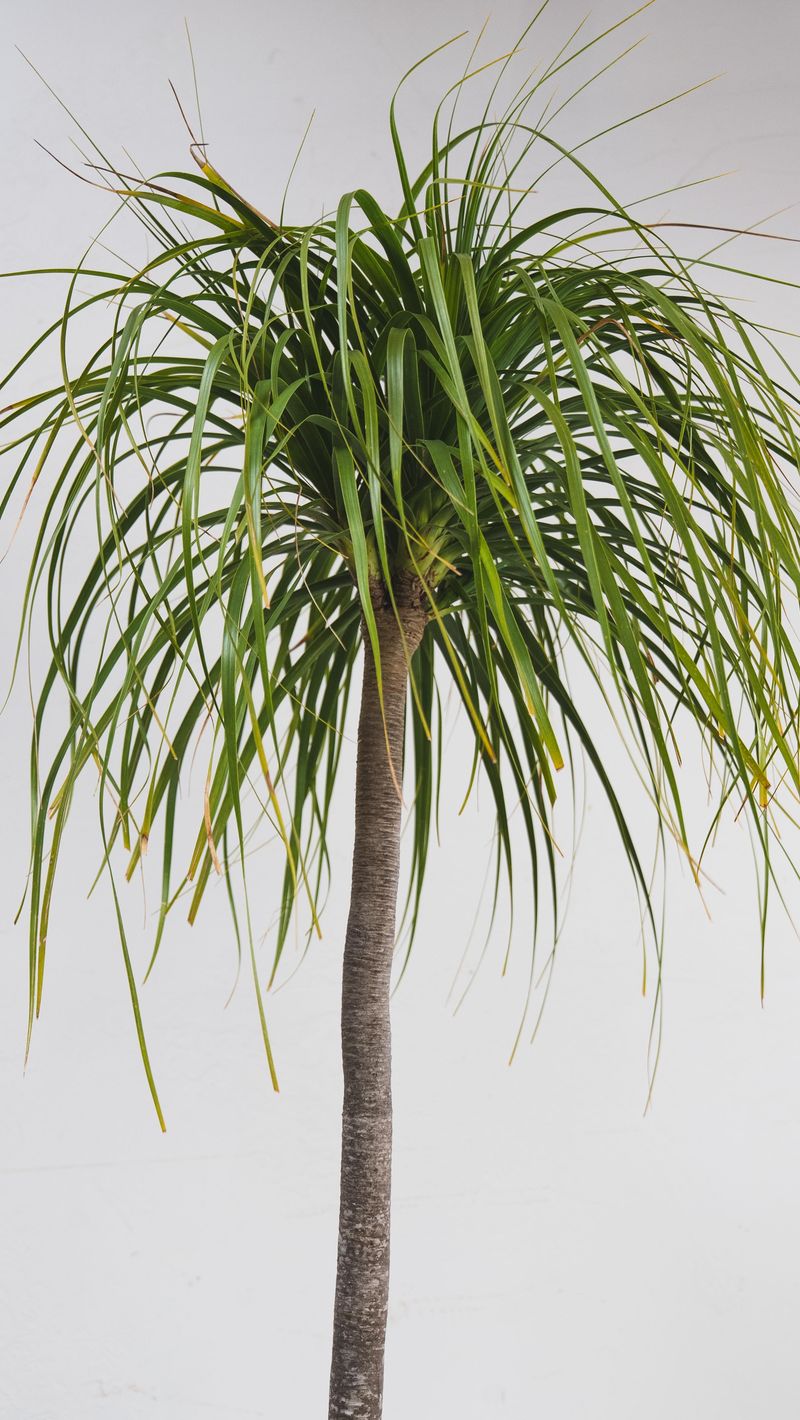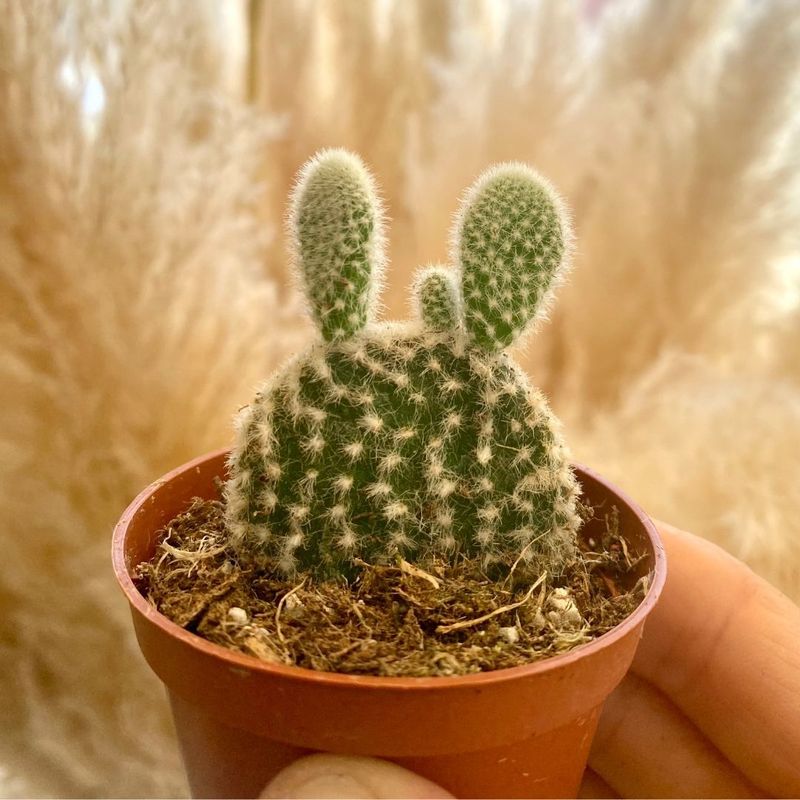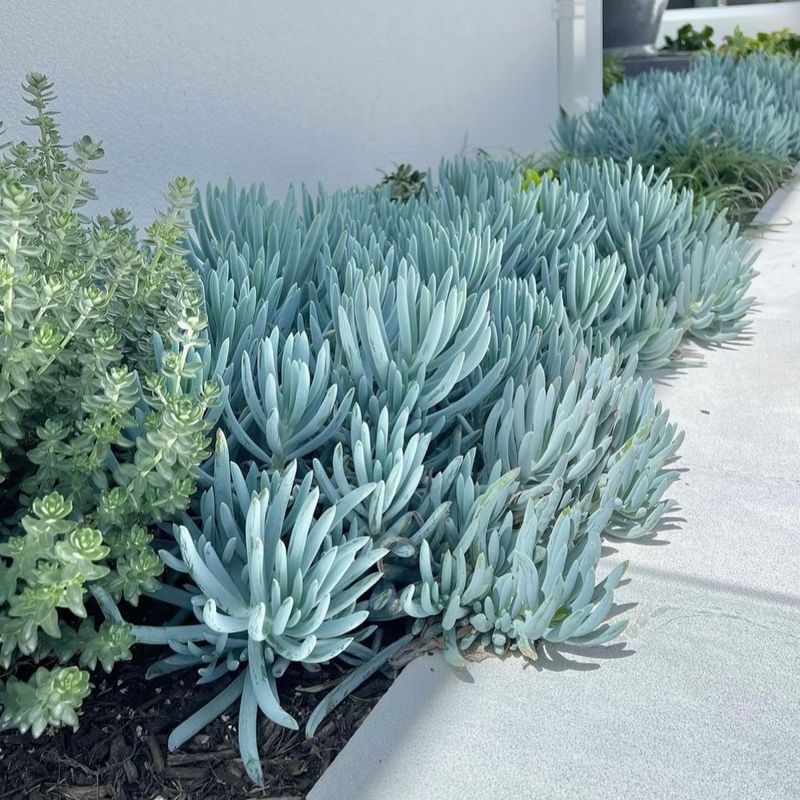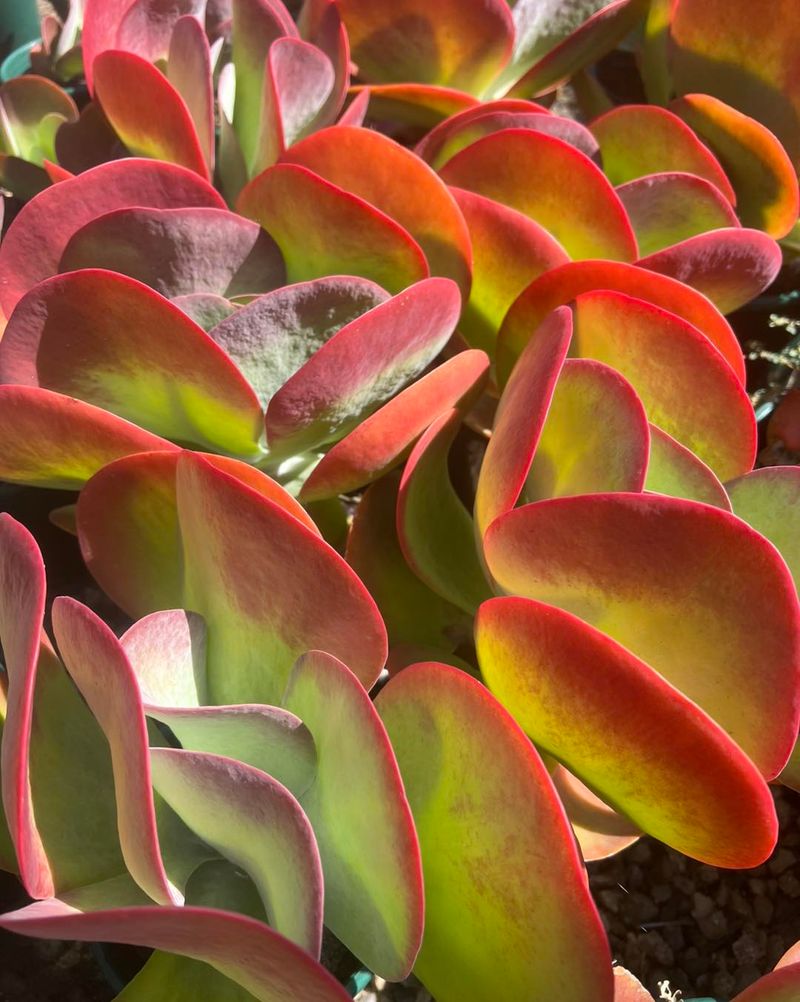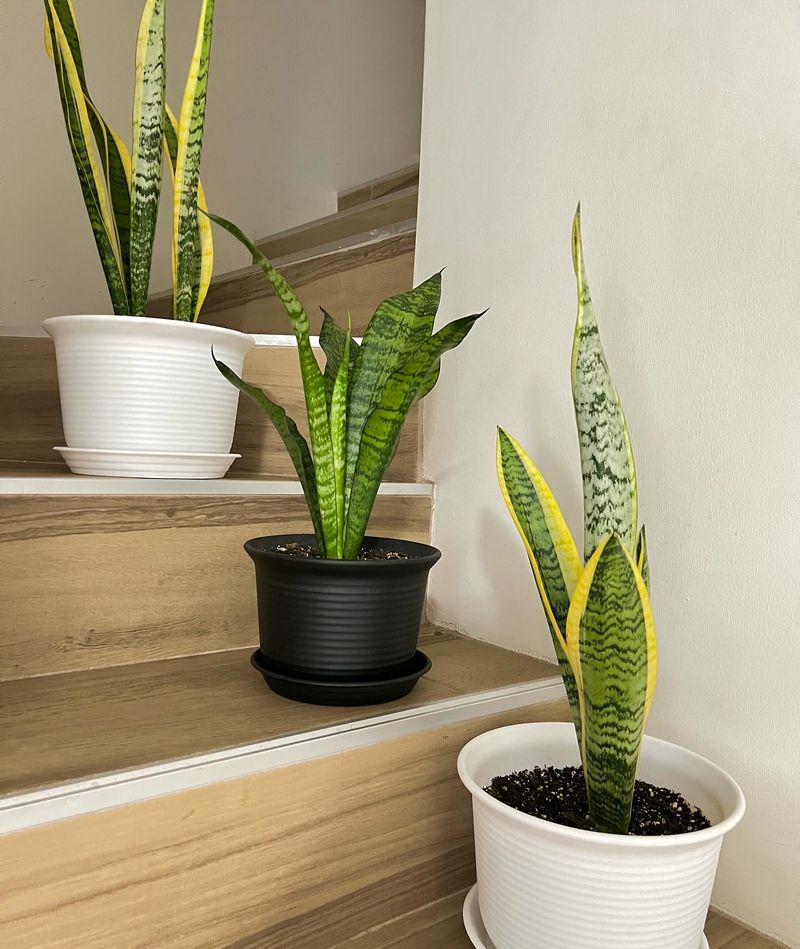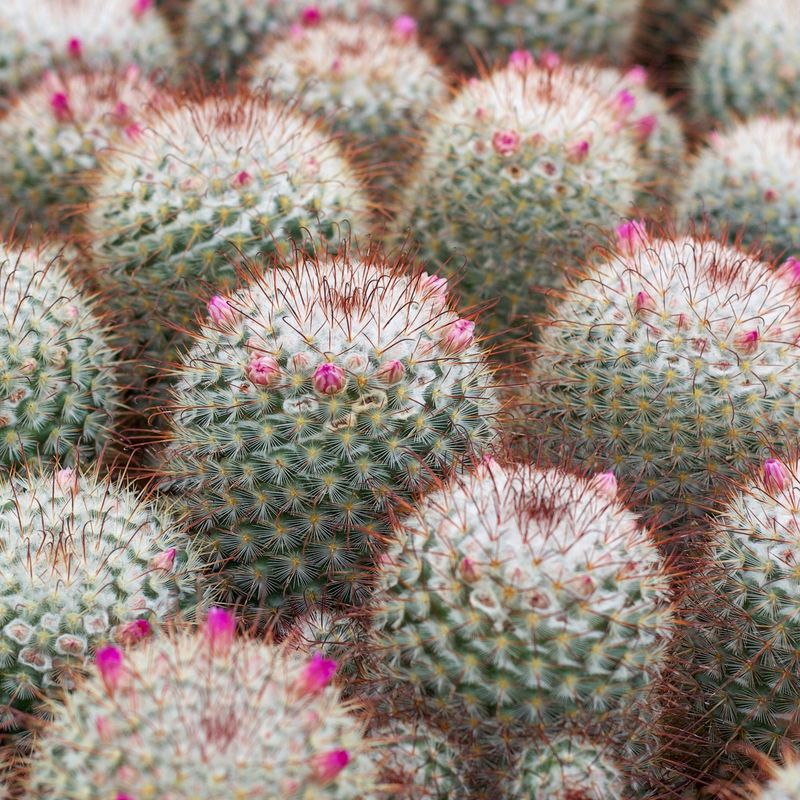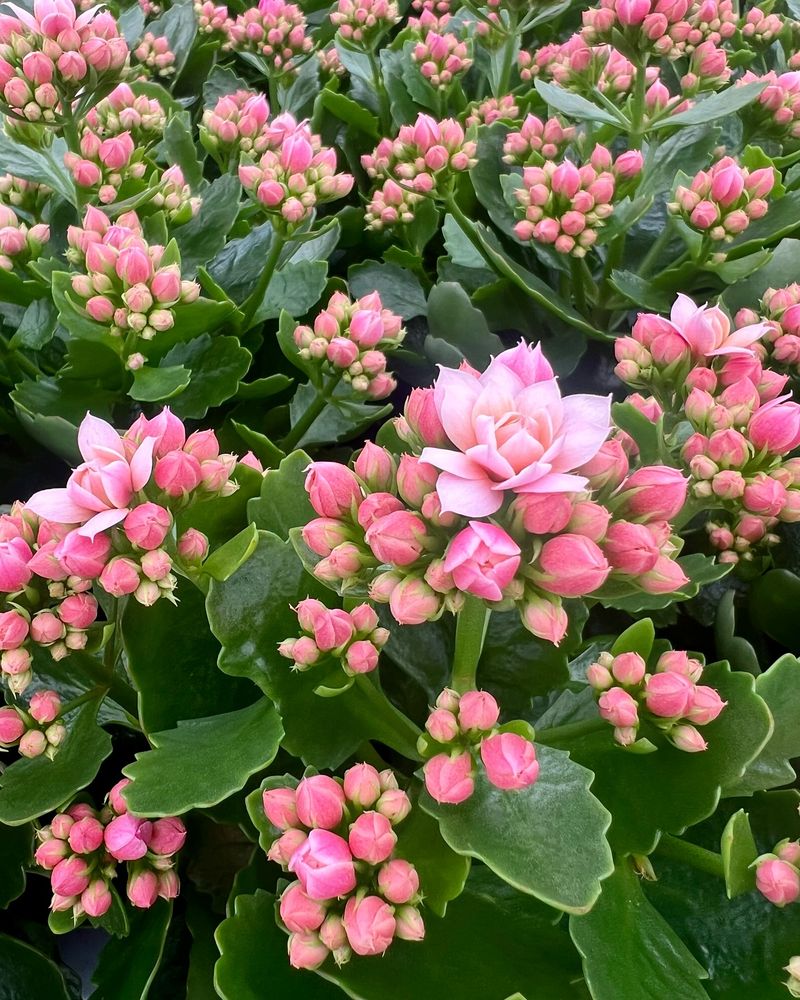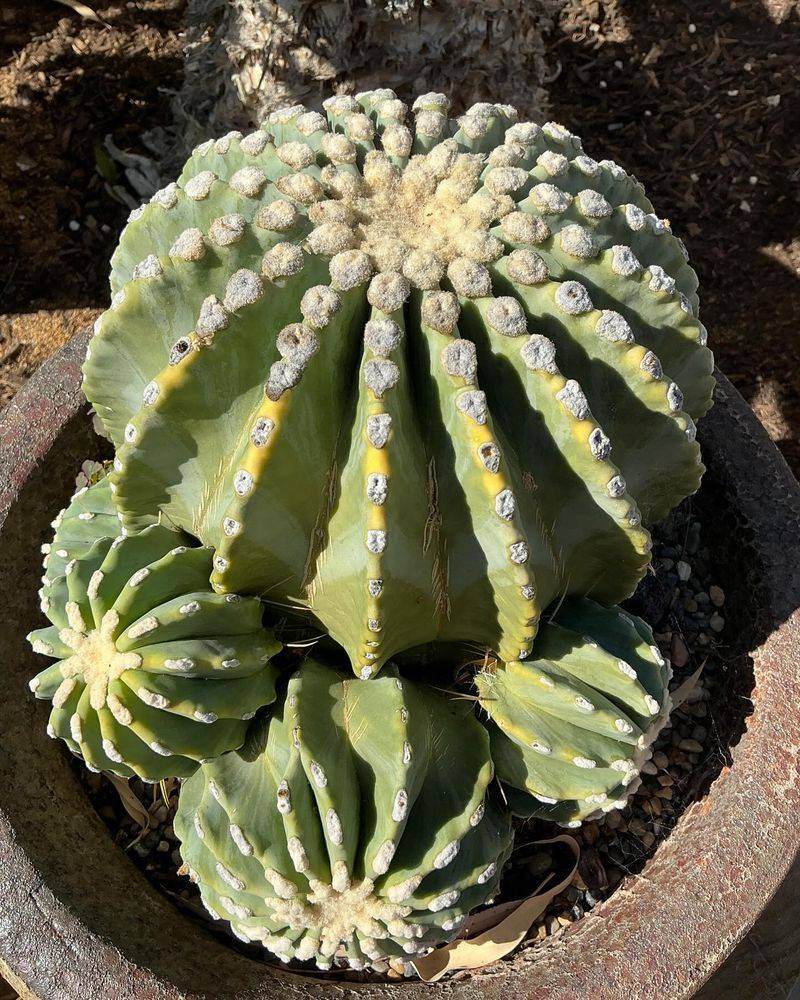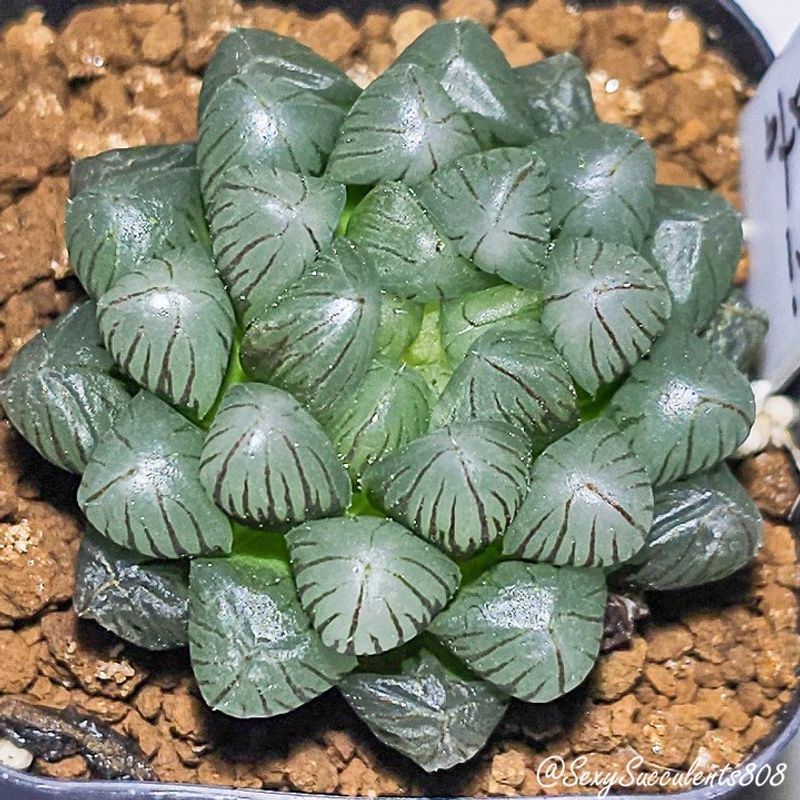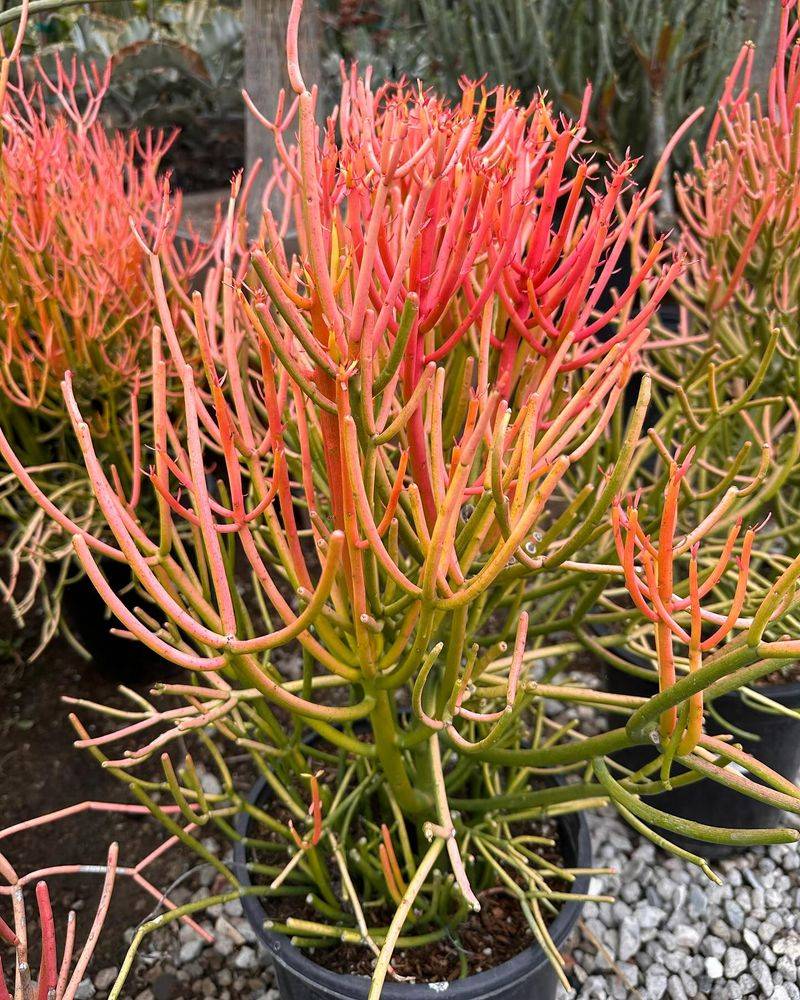Succulents have become the darlings of indoor gardening, bringing a touch of natural beauty to any living space with minimal effort. These water-storing plants come in an amazing array of shapes, sizes, and colors that can brighten even the tiniest corners of your home.
Whether you’re a seasoned plant parent or just starting your green journey, these easy-care beauties offer something for everyone.
1. Echeveria ‘Lola’
Rosette-shaped with pale lavender-pink leaves, Echeveria ‘Lola’ looks almost too perfect to be real. The powdery coating on its leaves gives it a dreamy, ethereal appearance that catches light beautifully.
Place this compact beauty on a sunny windowsill or small desk where its symmetrical form can be admired up close. Requiring minimal water and care, ‘Lola’ rewards with occasional pink-orange flower stalks that rise dramatically above the rosette.
2. String of Pearls
Cascading from hanging planters like beaded curtains, String of Pearls creates living artwork in any room. The round, pea-sized leaves store water and dangle from slender stems that can grow several feet long.
Perfect for high shelves or hanging planters where the strands can gracefully trail downward. Native to southwest Africa, this succulent thrives in bright indirect light and only needs watering when the soil feels completely dry.
3. Zebra Haworthia
Striped like its namesake animal, Zebra Haworthia features distinctive white horizontal bands across dark green pointed leaves. Its compact rosette rarely exceeds 6 inches, making it ideal for tiny spaces.
Unlike many succulents, this little gem tolerates low light conditions beautifully. Perfect for office desks, bathroom shelves, or any spot with minimal sun exposure. The Zebra plant’s forgiving nature makes it an excellent starter succulent for beginners still learning watering routines.
4. Burro’s Tail
Plump, overlapping leaves create the charming, tail-like appearance of this Mexican native. Burro’s Tail (Sedum morganianum) produces stems that can grow up to 4 feet long when mature, creating a dramatic curtain of blue-green foliage.
Handle with care – the leaves detach easily! This quirky characteristic actually helps the plant propagate in the wild. Hang this beauty where it won’t be bumped, and water sparingly to keep those chubby leaves looking their best.
5. Jade Plant
Often called the money plant or lucky plant, Jade develops a miniature tree-like appearance with thick woody stems and oval, glossy leaves. Many families pass down these long-lived plants through generations as they can thrive for decades.
Jade plants adapt well to indoor conditions and gradually develop character as they age. Their sturdy branches and rich green leaves make them perfect statement pieces for coffee tables or entryways. In the right conditions, they’ll reward you with delicate star-shaped white or pink flowers.
6. Aloe Vera
Beyond its famous healing properties, Aloe Vera makes a striking architectural plant with its spiky, serrated leaves growing from a central point. The gel inside those thick leaves has been used for centuries to treat burns and skin irritations.
Keep this practical beauty on a sunny kitchen windowsill where it’s both decorative and useful. Young plants start small but can eventually grow quite large, so give them room to expand. The occasional offsets (baby plants) that appear at the base are perfect for sharing with friends.
7. Panda Plant
Velvety leaves covered in soft white hairs give this Madagascar native its irresistibly touchable texture. The Panda Plant (Kalanchoe tomentosa) features distinctive brown spots along the edges of its silvery-green, oval-shaped leaves.
Growing to about 18 inches tall, this fuzzy friend makes an excellent accent plant for bright spots. Its unusual texture creates wonderful contrast when grouped with smooth-leaved succulents. Despite its exotic appearance, the Panda Plant is surprisingly easy to care for – just avoid getting those fuzzy leaves wet.
8. Living Stones
Nature’s perfect mimics, Lithops (Living Stones) have evolved to resemble the pebbles and rocks of their native South African deserts. Each plant consists of just two fused leaves with a split down the middle, through which flowers emerge.
These fascinating little oddities rarely grow larger than an inch across, making them perfect for tiny containers or dish gardens. Their extraordinary camouflage evolved as protection from grazing animals. Living Stones require special watering care – they need almost no water during their dormant period.
9. Crown of Thorns
Bright blooms appear year-round on this tough, adaptable plant with woody stems and small, oval leaves. The Crown of Thorns (Euphorbia milii) features thorny stems that add dramatic texture to your plant collection.
Originally from Madagascar, this flowering succulent comes in varieties with red, pink, yellow, or white blooms. Place it in your sunniest window for maximum flowering. Despite its delicate-looking flowers, this is one of the most drought-tolerant houseplants you can grow – perfect for frequent travelers!
10. Christmas Cactus
Flat, segmented stems cascade gracefully from this Brazilian forest native that erupts with colorful blooms around the holiday season. Unlike desert cacti, the Christmas Cactus (Schlumbergera) grows naturally in tree branches in humid forests.
Pass this heirloom plant down through generations – they can live for decades! The arching stems make it perfect for hanging baskets or edge-of-shelf displays. With proper care and the right light conditions, these beauties can flower twice yearly with tubular blooms in pink, red, white, or purple.
11. Ponytail Palm
Despite its name, the Ponytail Palm isn’t a palm at all – it’s a succulent with a bulbous base and long, thin leaves that cascade like a fountain. The swollen trunk stores water, allowing it to survive long periods of drought in its native Mexican desert habitat.
Slow-growing and long-lived, these quirky plants make excellent statement pieces. Young specimens work well on tabletops, while mature ones create dramatic floor displays. Their unusual shape adds personality to modern interiors, and their easy-care nature makes them perfect for busy plant parents.
12. Bunny Ear Cactus
Resembling rabbit ears, the flat, oval pads of this Mexican cactus grow in pairs, creating its whimsical appearance. The Bunny Ear Cactus (Opuntia microdasys) lacks traditional spines but is covered in clusters of tiny barbed bristles called glochids.
Keep this cute character on sunny windowsills where children can admire but not touch it! The symmetrical growth pattern creates a sculptural effect that works well in minimalist or Southwest-inspired decor. No flowering? Move it outdoors during summer – the temperature variation often triggers blooming.
13. Blue Chalk Sticks
Powdery blue-gray finger-like leaves create a stunning color accent among typical green houseplants. Blue Chalk Sticks (Senecio mandraliscae) grow in spreading clumps with upright or slightly trailing stems reaching 12-18 inches.
The unusual blue coloration makes this succulent particularly striking when paired with terracotta pots or warm-toned containers. Use them as spiller plants in arrangements or let them stand alone. Their color intensifies with more sun exposure, though they’ll tolerate partial shade.
14. Paddle Plant
Resembling stacked pancakes, the Paddle Plant (Kalanchoe thyrsiflora) features round, flat leaves with stunning red edges when exposed to bright light. Also called the Flapjack Plant, its leaves grow in opposite pairs, creating a vertical column of increasingly larger discs.
Native to South Africa, this architectural beauty can reach up to 2 feet tall. When mature and under ideal conditions, it produces a tall flowering stalk with yellow blooms. The dramatic coloration makes it perfect as a focal point in mixed arrangements or as a standalone specimen.
15. Snake Plant
Sword-like leaves standing tall and proud make the Snake Plant (Sansevieria) one of the most recognizable houseplants. Available in varieties with different patterns, heights, and edge colors, these architectural beauties fit anywhere from floor corners to desktop accents.
NASA research confirmed Snake Plants as air purifiers that convert CO2 to oxygen at night – unlike most plants. Nearly indestructible, they tolerate neglect, low light, and irregular watering better than almost any other houseplant. Their striking vertical growth makes them perfect for narrow spaces where other plants won’t fit.
16. Pincushion Cactus
Small and perfectly round, Pincushion Cacti form neat little globes covered in a geometric pattern of spines and often topped with colorful flowers. These miniature marvels rarely grow larger than a few inches across, making them perfect for tiny spaces.
Mammillaria, the largest genus of cacti, includes most plants commonly called Pincushion Cacti. Their compact size makes them ideal for windowsills, desk gardens, or grouped displays. Many varieties produce rings of bright pink, red, or yellow flowers that create a halo effect around the plant when in bloom.
17. Kalanchoe Blossfeldiana
Clusters of tiny, long-lasting flowers in vibrant shades of red, orange, yellow, or pink crown this popular succulent. The scalloped, glossy green leaves provide an attractive base even when not in bloom.
Often gifted as flowering houseplants, these colorful beauties can rebloom with proper care. Native to Madagascar, they prefer bright indirect light and only occasional watering. Their compact growth habit makes them perfect for coffee tables, kitchen counters, or anywhere you need a pop of color in a small space.
18. Barrel Cactus
Perfectly round when young and gradually elongating with age, Barrel Cacti bring the Wild West indoors with their bold form and impressive spines. The ribbed surface expands and contracts like an accordion as the plant stores and uses water.
These slow-growing desert natives can eventually reach impressive sizes, but take years to outgrow their space. The tops often feature a crown of yellow or orange flowers that develop into interesting seed pods. Their symmetrical shape makes them natural focal points in any room.
19. Haworthia Cooperi
Transparent “windows” at the tips of each leaf make this South African succulent truly magical. These clear leaf ends allow light to penetrate deep into the plant when growing partially buried in its natural habitat.
Arranged in a tight rosette rarely larger than 3 inches across, the fleshy leaves resemble tiny green jewels. Place this conversation starter where it can catch the light – the translucent tips create an almost glowing effect. Their small size makes them perfect for terrariums, dish gardens, or miniature landscapes.
20. Euphorbia Tirucalli ‘Firesticks’
Coral-like branches in shades of orange, pink, and yellow create a living flame effect with this dramatic succulent. Also called Pencil Cactus or Sticks on Fire, this variety of Euphorbia tirucalli changes color with the seasons and light exposure.
The slender, cylindrical stems grow in a branching pattern that creates an architectural statement. Native to semi-arid tropical regions of Africa and India, this attention-grabbing plant can eventually grow quite large but responds well to pruning. Handle with care – the milky sap can irritate skin.

